A Guide to Electrical Panel Inspection for UAE & GCC Facilities
An electrical panel inspection is not merely a cursory check; it is a methodical, top-to-bottom assessment of your facility's main electrical distribution board—the heart of your operations. For engineers, panel builders, and procurement teams in the UAE, this critical procedure is the first line of defense against our region's uniquely harsh environmental conditions, ensuring safety, compliance, and operational continuity.
Why Regular Panel Inspections Are Non-Negotiable in the UAE
In the demanding commercial and industrial landscape of the UAE, your electrical panel is the central nervous system for your facility's power. The region's climate—defined by extreme heat, high humidity, and airborne dust—makes a regular electrical panel inspection a non-negotiable part of any robust maintenance strategy, essential for preventing catastrophic failures and ensuring a reliable energy management solution Dubai and other GCC hubs depend on.
Mitigating Environmental and Operational Risks
The GCC climate presents a unique cocktail of challenges for electrical components. Intense heat, often exceeding 40°C, combined with dust and coastal humidity, accelerates the degradation of insulation, promotes corrosion on terminals and busbars, and significantly increases the risk of overheating. A proactive inspection strategy is the only effective way to identify these issues while they are small and manageable, long before they escalate into costly downtime or a serious electrical fire. For a deeper dive, you can find further insights into electrical systems that cover foundational elements.
Ensuring Compliance and Operational Excellence
Beyond physical risks, consistent inspections are a matter of regulatory compliance. Authorities across the UAE and KSA, including the Dubai Municipality and Abu Dhabi's Department of Energy, enforce strict electrical safety regulations that mandate periodic assessments. Non-compliance can lead to significant fines and operational shutdowns.
Local Data Point: Electrical faults are a major concern, with Dubai Civil Defence statistics linking over 60% of building fires indirectly to electrical system malfunctions. This starkly illustrates the critical importance of diligent maintenance and inspection.
Systematic inspections are a cornerstone of operational excellence, providing invaluable data that informs:
- Preventive Maintenance: Catch loose connections or deteriorating electrical components UAE-based facilities use before they fail.
- Safety Assurance: Protect personnel and assets from arc flash incidents and electrical shock hazards.
- System Reliability: Ensure a stable power supply for critical operations, which is the backbone of any industrial or commercial enterprise.
Key Focus Areas for Electrical Panel Inspection in the GCC
This table summarises the primary inspection points and their importance for system reliability and safety in the Gulf region.
| Inspection Area | Key Objective & Technical Spec | Common Risks if Neglected in GCC Climate |
|---|---|---|
| Connection Tightness | Prevent overheating at terminations. Verify torque values as per manufacturer specs. | Loose connections create high resistance, leading to heat buildup, arcing, and fire. |
| Component Condition | Check for signs of wear, corrosion, or heat damage on breakers and busbars. | Degraded insulation (lowered IP rating) and corroded parts can cause trips or catastrophic failure. |
| Dust & Debris Buildup | Ensure clean internal components for optimal heat dissipation. | Dust absorbs moisture from high humidity, leading to short circuits and reduced cooling efficiency. |
| Proper Labeling | Verify all circuits are clearly identified according to IEC standards. | Misidentified circuits pose a severe risk during maintenance and delay troubleshooting. |
| Local Code Compliance | Confirm adherence to DEWA, ADDC, and other local utility standards. | Non-compliance can result in fines, operational shutdowns, and invalidated insurance policies. |
Ultimately, a scheduled and meticulously performed electrical panel inspection is the most effective strategy for bridging the gap between proactive maintenance and business continuity, securing your infrastructure in the demanding GCC market.
Preparing for a Safe and Thorough Inspection
A successful electrical panel inspection starts long before the panel cover is removed. Proper preparation is the foundation of a safe, efficient, and conclusive assessment, mitigating risk and ensuring a data-driven outcome. This involves methodical documentation review, team coordination, and rigorous adherence to safety protocols.
The Essential Pre-Inspection Checklist
Before approaching a live panel, a structured plan is vital, especially in the high-stakes industrial and commercial sites across Dubai and Abu Dhabi.
- Gather Documentation: Obtain all relevant single-line diagrams (SLDs), previous inspection reports, and maintenance logs. These documents provide a history of the system, helping to identify recurring issues.
- Coordinate with Facility Teams: Communicate with facility managers and operations staff to schedule a planned shutdown. This prevents operational disruptions and ensures all on-site personnel are aware of the inspection activities.
- Assess the Environment: Conduct a walkthrough to identify immediate hazards. Look for water ingress, physical obstructions, poor lighting, or other environmental conditions that could compromise safety or the inspection's quality.
Prioritizing Safety: PPE and LOTO Procedures
In the GCC, where industrial safety standards are paramount, a "safety first" mindset is mandatory. This begins with appropriate Personal Protective Equipment (PPE). For any electrical panel inspection, standard issue includes arc-rated clothing, insulated gloves with leather protectors, safety glasses, and a hard hat, with the arc flash rating determined by the panel's incident energy level.
Equally critical is the implementation of Lockout/Tagout (LOTO) procedures. This is the definitive method for de-energizing equipment and ensuring it cannot be accidentally re-energized during work.
A comprehensive approach to safety extends beyond PPE. A detailed electrical risk assessment must be conducted before any hands-on work. This process identifies all potential hazards and outlines clear control measures. To see what this involves, explore our guide on how to conduct an electrical risk assessment.
Adhering to these safety protocols creates a controlled environment, allowing full focus on the technical inspection.
Assembling the Modern Inspection Toolkit
While basic insulated hand tools are fundamental, a modern inspection requires advanced diagnostic equipment to gather accurate, non-invasive data.
Here’s what should be in your kit:
- Calibrated Digital Multimeter (DMM): Essential for verifying zero voltage after LOTO and taking precise voltage and current measurements.
- Insulation Resistance Tester (Megger): Crucial for testing the integrity of wire and cable insulation, which is particularly vulnerable to degradation from the UAE's heat and humidity.
- Calibrated Torque Wrench: Loose connections are a primary cause of overheating. A torque wrench is the only way to ensure all terminations are tightened to precise manufacturer specifications.
- Thermal Imager: Perhaps the most valuable tool for predictive maintenance. A thermal camera instantly identifies hot spots on breakers, busbars, and connections—flagging potential failures long before they become critical. These are essential for any energy meter GCC installation as well.
These advanced tools elevate an inspection from a simple visual check to a data-backed analysis, enabling engineers to make informed decisions. As systems grow more complex, for instance when integrating solar panels into your home's main electrical system, the need for well-equipped, regular inspections becomes even more critical for overall system safety.
What to Look for During a Visual and Mechanical Check
Once safety checks are complete and the panel is de-energized, the hands-on inspection begins. This is where a trained eye, attuned to the specific challenges of the UAE climate, becomes the most valuable tool. A systematic approach, starting with the enclosure and moving methodically to internal components, is key to uncovering issues that threaten safety and reliability.
The infographic below highlights the essential precautions to take before any physical checks are performed.
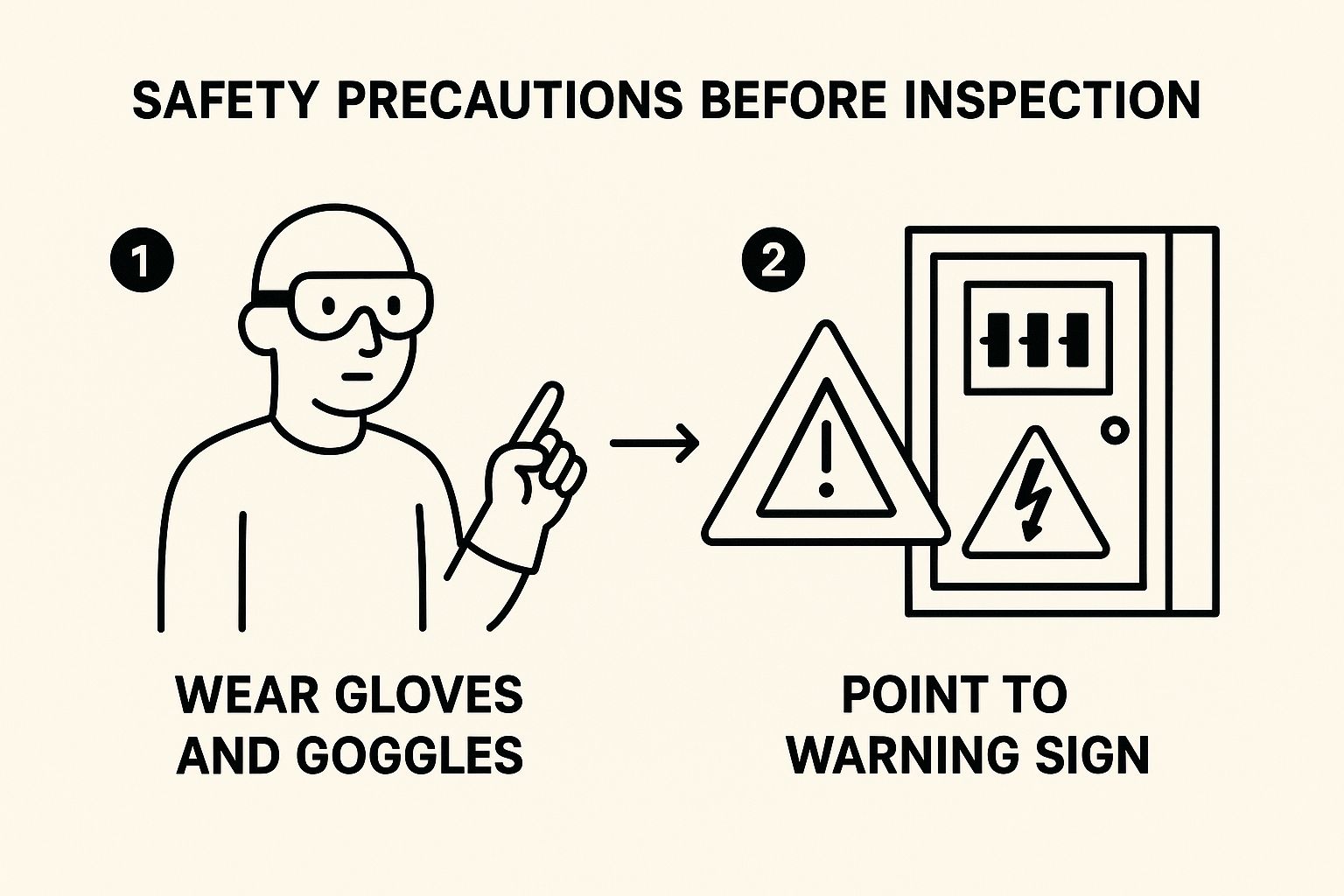
As shown, safety is non-negotiable, requiring the right PPE and a clear understanding of hazards before touching the panel.
Examining the Enclosure and General Environment
The inspection begins with the panel's exterior and its immediate surroundings, which can reveal much about its internal health and the environmental stresses it endures.
- Signs of Physical Damage: Look for dents, deep scratches, or warping on the panel. Damage to the enclosure can compromise its IP rating, exposing internal components to dust and moisture—two significant threats in the GCC.
- Corrosion and Rust: Pay close attention to hinges, latches, and bottom edges. The high humidity along the coast accelerates corrosion, which can weaken the enclosure and create entry points for contaminants.
- Pest Intrusion: Check for signs of pests, such as droppings or damaged wiring near cable entries. Rodents and insects can cause significant damage, leading to short circuits and fire hazards.
- Proper Labeling: Ensure the panel directory is legible, accurate, and up-to-date. Mislabeled circuits are a major safety risk for maintenance personnel.
Inspecting Internal Components and Wiring
With the cover removed, the focus shifts to the internal components. Here, you are looking for evidence of electrical stress, component degradation, and non-compliance.
A survey of licensed electricians in the UAE highlighted recurring faults: loose connections were found in 45% of inspections, corrosion from humidity in 32%, and non-compliant or undersized breakers in 28% of panels. These are not minor issues; they significantly increase the risk of fire and electric shock.
This data underscores why a detailed internal check is crucial. Look for discoloration or melting on the plastic housings of circuit breakers, contactors, or terminal blocks. These are clear indicators of overheating, often caused by a poor connection or an overloaded circuit.
Verifying Mechanical Integrity and Connections
The mechanical integrity of electrical connections is paramount for a safe and reliable system. Loose terminations are the most frequent source of dangerous hot spots.
Torque Verification: A Best Practice
Using a calibrated torque wrench is an essential best practice. Every terminal screw and busbar bolt has a manufacturer-specified torque value for a reason.
- Check a Sample of Connections: Methodically check the tightness of key connections, focusing on the main incomers, high-load circuits, and busbar joints.
- Document Findings: Log which connections were checked and if any required tightening. This data is invaluable for future maintenance planning.
Connections loosen over time due to thermal cycling (expansion and contraction from heating and cooling) and mechanical vibration. It is also crucial to be vigilant against counterfeit electrical components UAE supply chains sometimes contain. A trained inspector can spot fakes by checking for legitimate certification marks (IEC, GCC), comparing them to manufacturer datasheets, and identifying poor build quality. A proper electrical panel inspection helps ensure the integrity of your entire electrical system.
Ultimately, the lifespan and safety of an electrical panel are directly linked to these regular checks. The average panel in the UAE is designed to last 25-30 years, but with many pre-2000 installations now considered outdated, proactive inspections are more critical than ever. You can discover more about electrical panel inspection frequency and its importance on childersenterprises.com.
Using Advanced Diagnostics and Electrical Testing
A visual and mechanical check is foundational, but a truly comprehensive electrical panel inspection requires advanced diagnostics. This is where we move beyond what the eye can see, gathering hard data that engineers and technicians across the UAE rely on to make predictive maintenance decisions. This shifts the strategy from finding existing faults to actively preventing future failures.
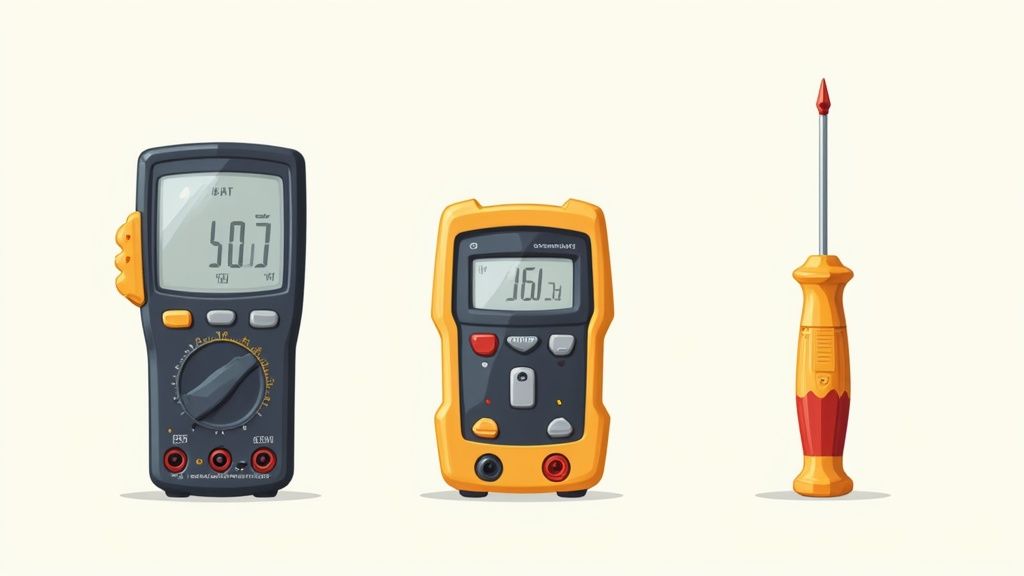
These tests are not about ticking a compliance box; they provide a deep understanding of the operational stresses on your system. Using the right tools, you can quantify performance, spot invisible signs of wear, and confirm that every component is operating as intended. This level of detail is critical for any energy management solution Dubai relies on for efficiency and safety.
Essential Electrical Tests for Panel Integrity
A professional inspection includes key electrical tests that, together, paint a complete picture of your system's health. This is especially important in the GCC, where high ambient temperatures can significantly shorten component lifespan.
- Voltage and Current Measurements: We check voltage levels at the main incomer and across phases. Significant imbalances can point to upstream issues or problems within the panel, straining three-phase equipment.
- Insulation Resistance Testing: Using a megohmmeter (or "megger") is crucial for detecting insulation degradation before it leads to a short circuit—a constant risk in the UAE's humid climate. This provides a quantifiable measure of insulation health.
- Power Quality Analysis: A power quality analyzer uncovers hidden issues like harmonics, voltage sags, and swells, which are often the culprits behind malfunctioning sensitive electronic equipment.
The Power of Thermal Imaging in Predictive Maintenance
Of all advanced tools, thermal imaging (thermography) provides the most significant return on investment for predictive maintenance. A quick, non-contact thermal scan creates an instant heat map of all components while the panel is under normal load.
A thermal scan doesn't just find hot spots; it quantifies them. By establishing a baseline temperature profile, subsequent inspections can reveal even minor temperature deviations, allowing for early intervention long before a component reaches a critical failure point.
Correctly interpreting thermal images is a specialised skill. The goal is to distinguish anomalous hot spots that signal danger from normal operating heat. For example, a connection point that is 15°C hotter than a similar one under the same load is a major red flag requiring immediate attention.
Common Faults and Recommended Actions: A Troubleshooting Guide
| Observed Fault | Potential Cause | Recommended Corrective Action |
|---|---|---|
| Phase Imbalance (>3%) | Unevenly distributed single-phase loads; faulty utility supply. | Redistribute loads across phases. Contact the utility provider if the issue is external. |
| Low Insulation Resistance | Degraded or moisture-damaged cable insulation; pinched wiring. | Isolate and replace the affected cable. Improve enclosure sealing (IP rating) to prevent moisture ingress. |
| Overheated Breaker | Overloading; poor terminal connection; internal breaker fault. | Verify load with a clamp meter. Re-torque terminal connection. Replace breaker if overheating persists. |
| Hot Spot on Busbar Joint | Loose connection; corrosion increasing electrical resistance. | De-energise, clean connection surfaces, and re-torque bolts to manufacturer specifications. |
This systematic process—test, interpret, act—is what defines a professional electrical panel inspection. It enables engineers in demanding environments like Dubai and Abu Dhabi to shift from a reactive to a proactive strategy, ensuring safety and maximizing uptime with quality components from trusted suppliers like GoSwitchgear.
Creating Actionable Reports and Post-Inspection Plans
An electrical panel inspection is incomplete without a clear, actionable report. For engineers and facility managers in the UAE and KSA, the final report is the crucial tool that translates observations into a strategic roadmap for maintenance, compliance, and safety. A well-structured report guides maintenance investments, demonstrates due diligence to regulatory bodies, and ultimately protects the facility.
Structuring a Comprehensive Inspection Report
A useful report must tell a complete story of the panel's health, backed by solid evidence. To meet the high standards expected in demanding environments like Dubai and Abu Dhabi, the report must be structured for clarity and impact.
Key sections should include:
- Executive Summary: A high-level overview for facility directors and procurement managers, outlining critical findings and immediate required actions.
- Detailed Findings: A component-by-component breakdown of all observations, supported by photographic evidence of issues like discolored wires, corroded busbars, or non-compliant components.
- Thermal Imaging Scans: Each thermal image must be paired with a standard photo for context, annotated with temperature readings and a clear explanation of why a hot spot presents a risk.
Prioritizing Recommendations for Action
Not all findings carry the same weight. To guide resource allocation effectively, issues must be categorized by severity. We use a clear, tiered system:
- Critical: Issues posing an immediate threat to safety or operations (e.g., exposed live parts, extreme overheating). These require immediate action.
- Urgent: Problems that will likely lead to failure or a safety hazard if not addressed soon (e.g., significant corrosion, overloaded circuits). These should be scheduled for repair within a short, fixed timeframe.
- Recommended: Items that address best practices or potential future issues (e.g., poor labeling, minor dust buildup). These can be integrated into the next planned maintenance cycle.
A well-structured report with prioritized actions transforms an inspection from a cost center into a strategic asset. It provides the justification needed for maintenance budgets and demonstrates due diligence to regulatory bodies across the GCC.
Building a Continuous Improvement Cycle
The inspection report is the starting point for a continuous improvement cycle. Findings should directly inform the maintenance schedule. If the inspection reveals a need for replacement parts, using certified, high-quality components is non-negotiable. Sourcing IEC-compliant parts ensures your system remains robust and meets local utility regulations. You can explore a full range of certified electrical protection equipment that meets these exact standards.
Finally, the report should recommend a date for the next electrical panel inspection, based on the equipment's age, its operating environment, and the current findings. A panel in a dusty industrial site in the UAE may require an annual inspection, while one in a clean data center might be checked every two years. This creates a proactive loop: inspect, act, and plan for the future.
Frequently Asked Questions About Panel Inspections
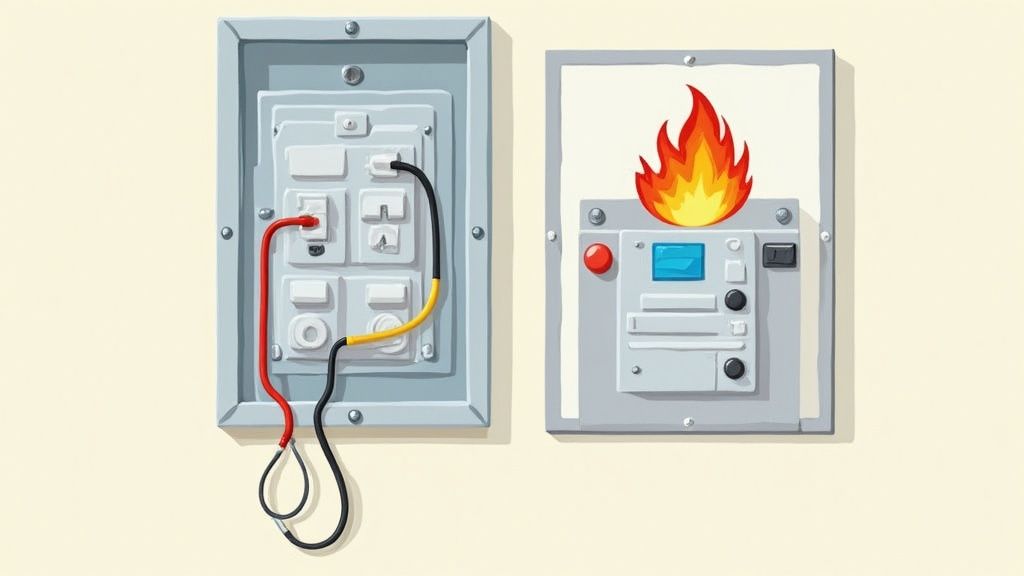
To conclude, here are answers to common questions our teams in Dubai and Abu Dhabi hear from engineers, facility managers, and procurement professionals. These practical insights can help refine your maintenance strategy.
How Often Should an Electrical Panel Inspection Be Performed?
The ideal frequency for an electrical panel inspection depends on several key factors specific to your facility and its environment in the UAE. A general guideline is every one to three years, but this should be adjusted based on:
- Operating Environment: A panel in a harsh industrial plant with high heat, dust, and humidity requires annual inspection. A panel in a climate-controlled office may only need inspection every three years.
- Equipment Age: Any panel over 15 years old should be inspected annually. Older components are more susceptible to failure under the thermal stress of the GCC climate.
- Load Criticality: Panels powering critical systems (data centers, medical equipment, production lines) warrant annual or even bi-annual inspections to ensure maximum uptime.
What Is the Typical Cost of a Panel Inspection in the UAE?
Cost varies based on the scope of work. The primary drivers are:
- Panel Size and Complexity: A large, multi-section switchgear assembly requires more time and expertise than a simple sub-distribution board.
- Scope of Testing: A basic visual check is the baseline. Costs increase with the addition of services like thermal imaging, insulation resistance testing, or power quality analysis.
- Reporting Requirements: A comprehensive report with annotated photos, thermal scans, and a prioritized action plan is more involved than a simple checklist.
Investing in a thorough electrical panel inspection is a strategic decision that saves significant costs in the long run by preventing unplanned downtime and catastrophic failures.
Are GFCI Outlets Necessary in Commercial Panels?
Yes, absolutely. Local regulations in Dubai and Abu Dhabi, aligned with IEC standards, mandate Ground Fault Circuit Interrupter (GFCI) protection for circuits feeding outlets in areas where water may be present. This is non-negotiable for:
- Commercial kitchens
- Bathrooms and locker rooms
- Outdoor receptacles
- Maintenance areas with sinks or subject to wash-downs
The absence of GFCI protection is a common compliance failure and a critical safety gap.
What Is the Difference Between a Fuse Box and a Circuit Breaker Panel?
Both devices provide overcurrent protection, but their technology is vastly different.
- Fuse Boxes: Use a fuse with a wire that melts to break an overloaded circuit. Once blown, the fuse must be replaced. This is outdated technology.
- Circuit Breaker Panels: Use a switch that automatically "trips" (disconnects) during an overcurrent. The breaker can be reset once the fault is cleared, making it safer and more convenient.
If your facility still uses fuse boxes, upgrading to a modern circuit breaker panel should be a high priority. This is a key step in modernizing your electrical system and is an essential part of any energy management solution Dubai facilities should implement.
At GoSwitchgear, we provide the certified components and expert support needed to ensure your electrical systems are safe, compliant, and reliable. For project support or to source high-quality electrical components across the UAE, explore our extensive catalogue at https://goswitchgear.com.


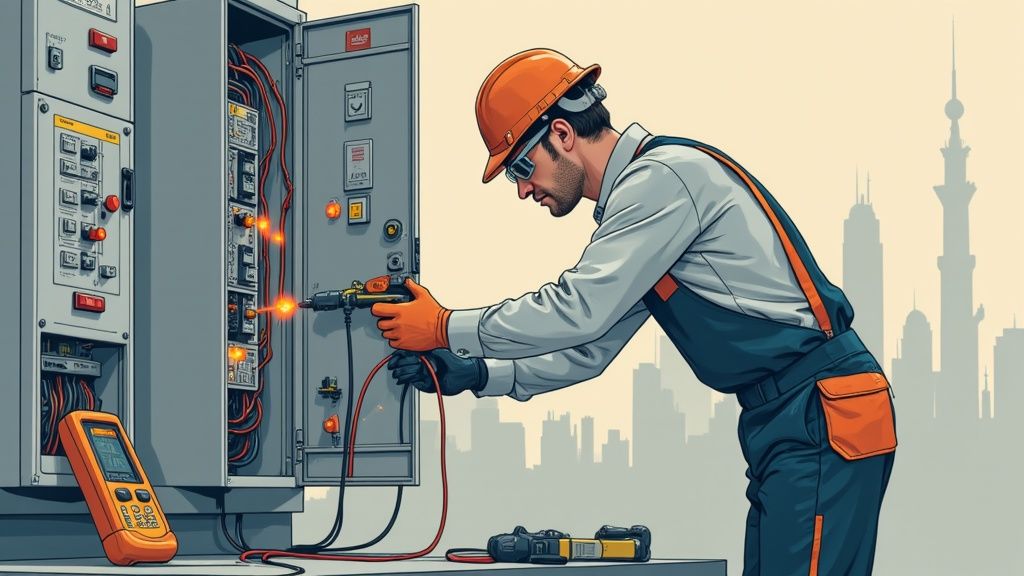
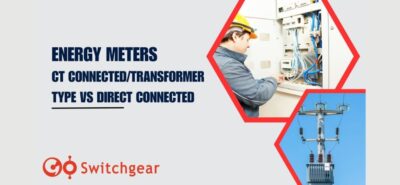
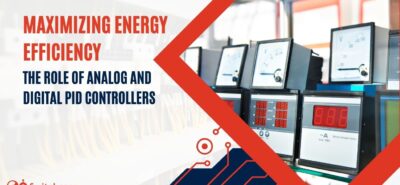
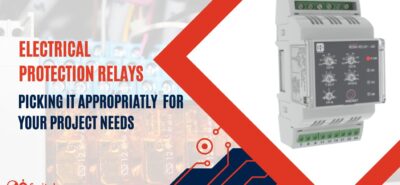
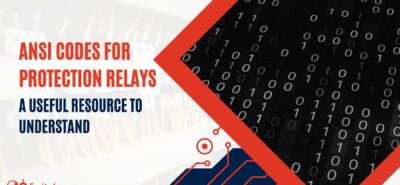
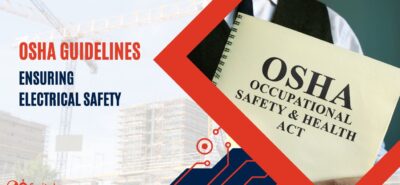


Leave a Reply